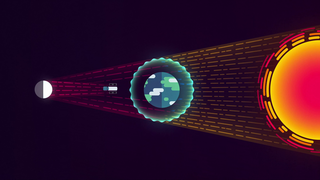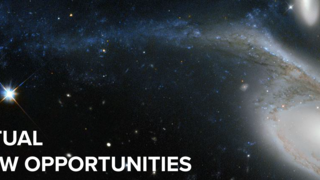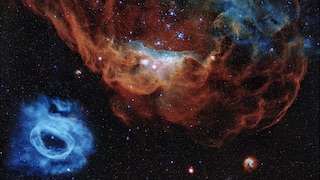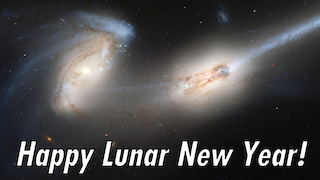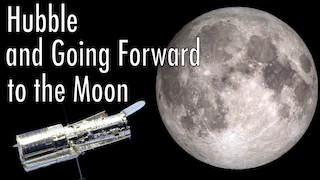Planets and Moons
ID: 13680
Taking advantage of the total lunar eclipse of January 2019, astronomers, using NASA’s Hubble Space Telescope, have measured the amount of ozone in the Earth’s atmosphere.
The method used serves as a proxy for how they will observe earthlike planets around other stars in search for worlds similar to our own.
For more information, visit https://nasa.gov/hubble.
Visualizations:
NASA/GSFC: K. Kim — Moonbounce Animation
ESA, NASA and L. Calçada (ESO) — Artist's concept of exoplanet orbiting Fomalhaut
ESA, Hubble, M. Kornmesser —Absorption Lines & Exoplanets
NASA/GSFC: Chris Smith — TOI 700 system transit Animation
ESA, Hubble, M. Kornmesser & L. L. Christensen — HD 189733b transiting its parent star (artist's impression)
ESA, ESO/L. Calçada, M. Kornmesser & L. L. Christensen (ESA/Hubble) — Exoplanet Transit Method
Videos & Images:
NASA Goddard Space Flight Center
European Space Agency
Space Telescope Science Institute
January 2019 Moon Image taken by Kevin Hartnett
Artbeats Stock Footage — Footage of leaf
Pond5 Stock Footage — Footage of weeping willow
footagefirm — Footage of sunrise and clouds
Music Credits:
“Life Unplanned” by Paul Saunderson [ PRS ]. Abbey Road Masters [ PRS ], and Universal Production Music
Hubble Views the Moon to Study Earth
The method used serves as a proxy for how they will observe earthlike planets around other stars in search for worlds similar to our own.
For more information, visit https://nasa.gov/hubble.
Visualizations:
NASA/GSFC: K. Kim — Moonbounce Animation
ESA, NASA and L. Calçada (ESO) — Artist's concept of exoplanet orbiting Fomalhaut
ESA, Hubble, M. Kornmesser —Absorption Lines & Exoplanets
NASA/GSFC: Chris Smith — TOI 700 system transit Animation
ESA, Hubble, M. Kornmesser & L. L. Christensen — HD 189733b transiting its parent star (artist's impression)
ESA, ESO/L. Calçada, M. Kornmesser & L. L. Christensen (ESA/Hubble) — Exoplanet Transit Method
Videos & Images:
NASA Goddard Space Flight Center
European Space Agency
Space Telescope Science Institute
January 2019 Moon Image taken by Kevin Hartnett
Artbeats Stock Footage — Footage of leaf
Pond5 Stock Footage — Footage of weeping willow
footagefirm — Footage of sunrise and clouds
Music Credits:
“Life Unplanned” by Paul Saunderson [ PRS ]. Abbey Road Masters [ PRS ], and Universal Production Music
Source Material
Related
Credits
Paul R. Morris (USRA): Lead Producer
Krystofer Kim (USRA): Animator
Chris Smith (USRA): Animator
Martin Kornmesser (ESA): Animator
Kevin Hartnett (NASA/GSFC): Photographer
Krystofer Kim (USRA): Animator
Chris Smith (USRA): Animator
Martin Kornmesser (ESA): Animator
Kevin Hartnett (NASA/GSFC): Photographer
Please give credit for this item to:
NASA's Goddard Space Flight Center
NASA's Goddard Space Flight Center
Short URL to share this page:
https://svs.gsfc.nasa.gov/13680
Mission:
Hubble
Keywords:
SVS >> Moon
SVS >> Hubble Space Telescope
SVS >> HST
SVS >> Astrophysics
SVS >> Lunar Eclipse
SVS >> James Webb Space Telescope
NASA Science >> Planets and Moons
https://svs.gsfc.nasa.gov/13680
Mission:
Hubble
Keywords:
SVS >> Moon
SVS >> Hubble Space Telescope
SVS >> HST
SVS >> Astrophysics
SVS >> Lunar Eclipse
SVS >> James Webb Space Telescope
NASA Science >> Planets and Moons
